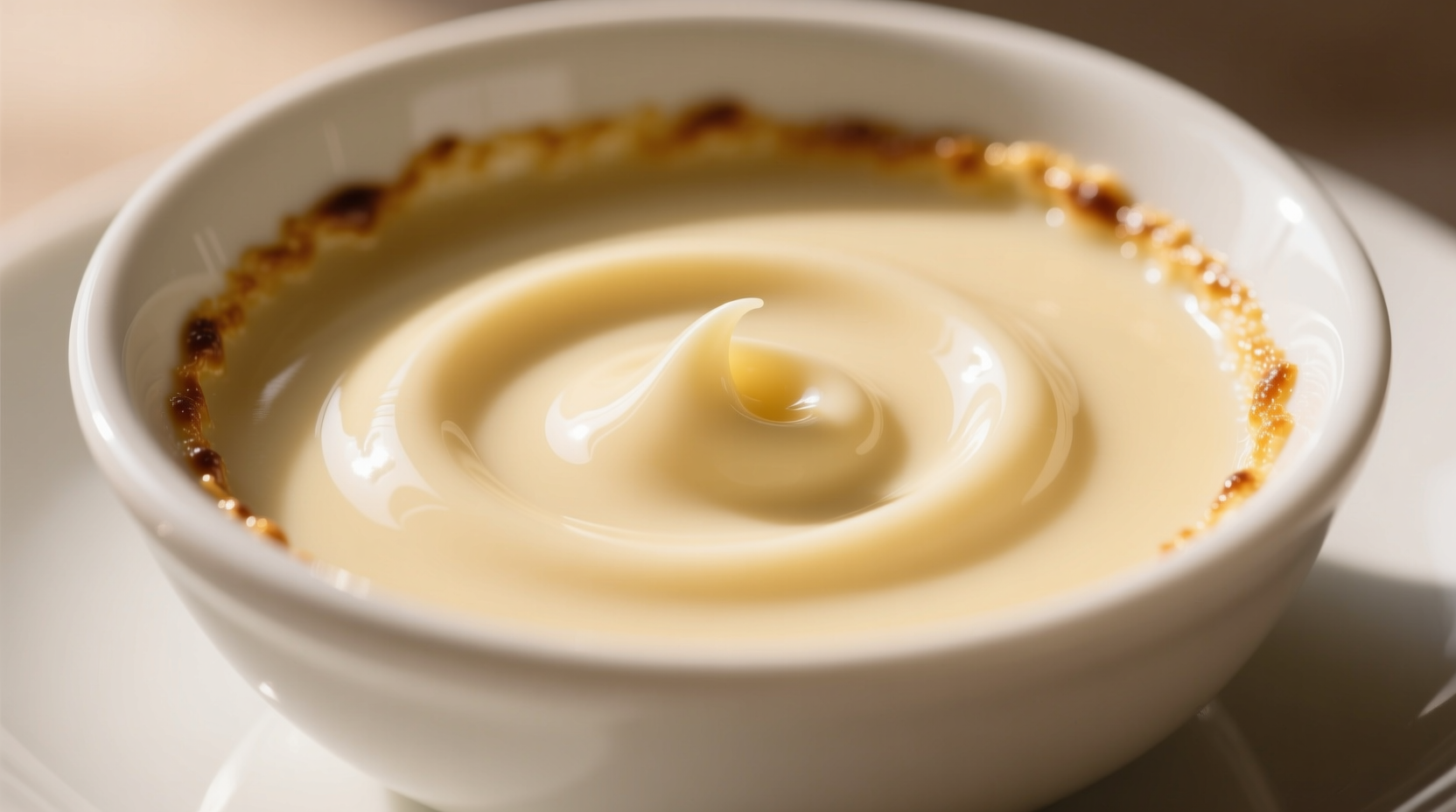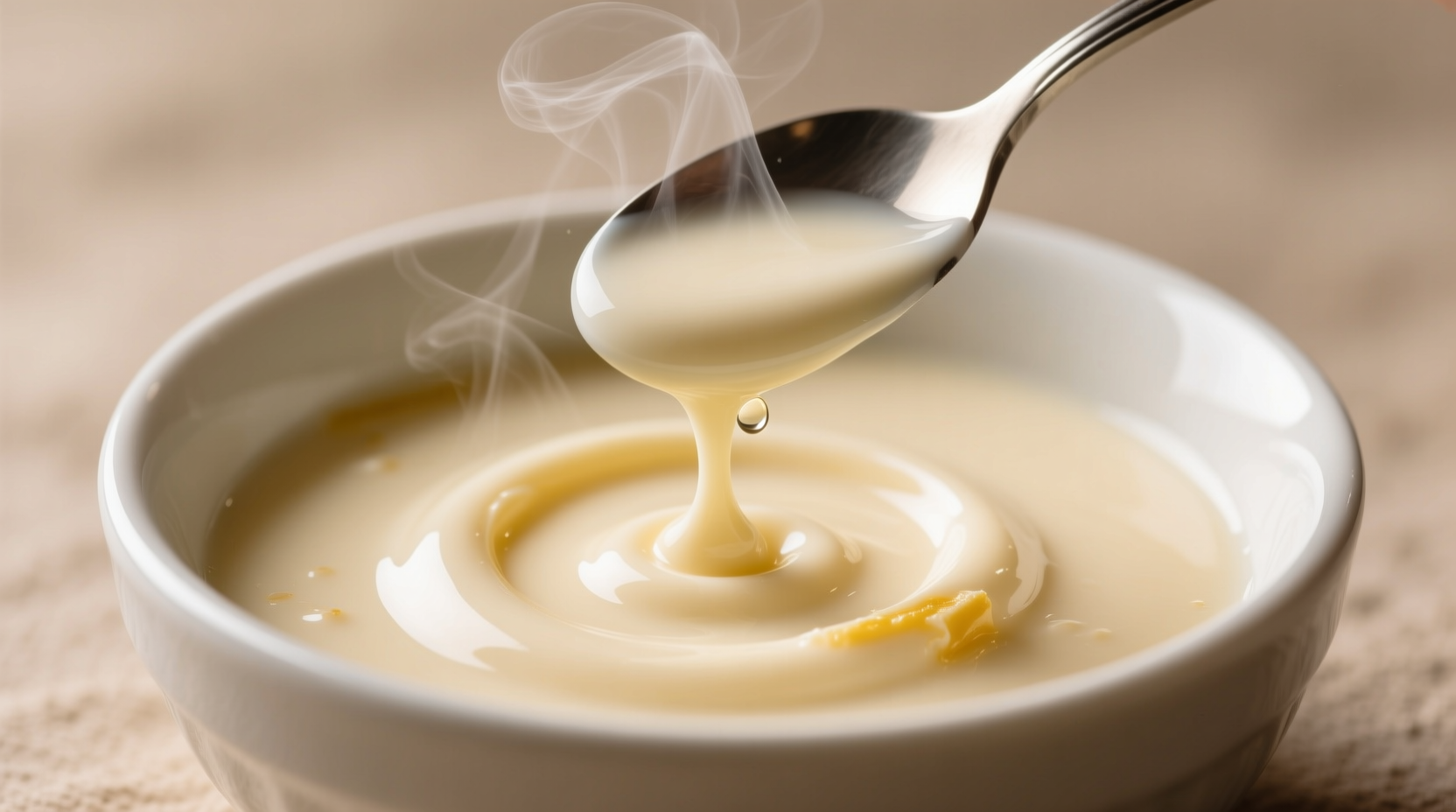Understanding what does béchamel taste like begins with recognizing its elegant simplicity. This classic French white sauce, one of the five mother sauces, offers a clean dairy profile that forms the backbone of countless dishes from lasagna to croquettes. Unlike more assertive sauces, béchamel's magic lies in its subtle flavor that enhances rather than dominates.
The Essential Flavor Profile of Béchamel
When you taste properly made béchamel, you'll experience three distinct elements working in harmony:
- Creamy dairy foundation - Fresh milk provides a sweet, clean lactic quality
- Buttery richness - The roux base delivers a subtle nuttiness without overwhelming butterfat
- Delicate seasoning - Traditional aromatics like onion and bay leaf add complexity without dominating
The ideal béchamel shouldn't taste of anything specific—it should taste like potential. This neutral yet flavorful base accepts additional seasonings beautifully, whether you're making a simple cheese sauce or incorporating it into complex casseroles. Many home cooks mistakenly expect béchamel to be rich like Alfredo; however, authentic béchamel maintains a light elegance that showcases its ingredients rather than masking them.

How Ingredients Shape Béchamel's Taste
The seemingly simple combination of butter, flour, and milk creates béchamel's distinctive flavor profile through careful technique:
The Roux Revolution
The foundation of béchamel's taste begins with the roux. When butter and flour cook together, they undergo the Maillard reaction, developing complex flavor compounds. A blond roux (cooked just until golden) provides that signature subtle nuttiness that defines traditional béchamel. Overcook the roux, and you'll create a darker, more pronounced flavor that transforms it into a velouté or espagnole base instead.
Milk Matters
Using whole milk delivers the optimal flavor balance—skim milk creates a thin, watery sauce while heavy cream makes it cloying. The temperature matters too: adding cold milk to hot roux causes lumps that create uneven flavor distribution, while scalded milk incorporates smoothly for consistent taste throughout. According to culinary research from Le Cordon Bleu's technique archives, heating milk with aromatics like onion studded with cloves and a bay leaf before incorporation adds dimensional flavor without overwhelming béchamel's delicate profile.
| Ingredient Variation | Flavor Impact | Recommended For |
|---|---|---|
| Whole milk with aromatics | Subtle herbal complexity | Traditional French preparations |
| Unsweetened plant-based milk | Slightly nutty, less creamy | Vegan adaptations |
| Half-and-half substitution | Richer, slightly sweeter | Cheese sauces and baked dishes |
Common Taste Problems and Solutions
Many home cooks struggle with béchamel that doesn't taste right. Understanding these common issues helps achieve perfect flavor:
Floury Taste
What causes it: Insufficient cooking of the roux or adding cold milk too quickly Solution: Cook the roux for 2-3 minutes until it smells nutty but hasn't browned, then gradually incorporate warm milk while whisking constantly
Buttery Overpowering
What causes it: Using too much butter or not balancing with adequate milk Solution: Maintain the classic 1:1:10 ratio (1 part butter, 1 part flour, 10 parts milk) for balanced flavor
Lack of Depth
What causes it: Omitting traditional aromatics or using low-quality ingredients Solution: Infuse milk with onion, bay leaf, and white pepper before making the sauce; use European-style butter for superior flavor
Béchamel Through History: An Evolution of Flavor
Béchamel's taste profile has evolved significantly since its creation. Historical culinary records show:
- 1651: François Pierre La Varenne's Le Cuisinier François described an early version using bread-thickened milk with butter and cream—much richer than modern béchamel
- 1800s: Marie-Antoine Carême standardized the roux-based version, creating the lighter, more versatile sauce we recognize today
- 1903: Auguste Escoffier codified béchamel in Le Guide Culinaire as one of the five mother sauces, establishing precise ratios that define its contemporary flavor profile
- Present: Modern interpretations maintain the classic flavor while accommodating dietary needs through plant-based adaptations
This historical progression demonstrates how béchamel's taste transformed from a heavy, cream-based sauce to the elegant, versatile foundation appreciated by chefs worldwide. The University of Gastronomic Sciences' culinary timeline confirms that the modern béchamel's delicate flavor emerged during Escoffier's refinement period, making it more adaptable to various dishes without overwhelming other ingredients.
Practical Applications: Maximizing Béchamel's Flavor Potential
Understanding what béchamel should taste like when done helps you use it effectively in your cooking:
As a Flavor Carrier
Béchamel's mild flavor makes it the perfect vehicle for other tastes. When making mornay sauce (cheese béchamel), the sauce should complement rather than compete with the cheese. Similarly, in vegetarian lasagna, béchamel allows vegetable flavors to shine through while providing creamy texture.
Texture and Temperature Effects
Béchamel's taste changes with temperature and texture. Served warm, it delivers maximum aroma and flavor perception. As it cools, the dairy notes become more pronounced while the buttery nuances diminish. When baked, as in gratins, the surface develops a delicate golden crust that adds a subtle caramelized dimension to the overall flavor profile.
Regional Variations
While traditional French béchamel maintains its characteristic mild flavor, regional adaptations showcase how the base sauce can transform:
- Italian besciamella: Often includes nutmeg and Parmesan, creating a more aromatic profile
- Greek bechamel: Used in moussaka with added egg yolks for richer flavor
- American "white sauce": Typically simpler with fewer aromatics, sometimes using processed cheese
These variations demonstrate béchamel's remarkable adaptability while maintaining its essential creamy, mild character that defines what does béchamel taste like at its core.
Perfecting Your Béchamel Taste
Achieving the ideal béchamel flavor requires attention to detail throughout the process. Start with quality ingredients—European-style butter makes a noticeable difference in flavor complexity. Cook the roux to the precise blond stage, neither pale nor browned. Warm your milk with traditional aromatics but remove them before incorporating. Whisk continuously during thickening to ensure even flavor distribution.
Season at the end, as béchamel's flavor concentrates slightly as it cools. A pinch of freshly grated nutmeg remains the classic finishing touch that enhances rather than dominates the sauce's natural profile. Remember that properly made béchamel should taste clean and comforting—never floury, greasy, or overly rich. When you've achieved the perfect balance, you'll understand why this simple sauce has remained a culinary cornerstone for centuries.











 浙公网安备
33010002000092号
浙公网安备
33010002000092号 浙B2-20120091-4
浙B2-20120091-4